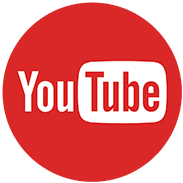The Buzz About Production Lines: Revolutionizing Manufacturing
Understanding the Production Line
Ever wondered how your favorite products are made? Well, it all starts with the production line! This systematic approach to manufacturing allows companies to produce goods efficiently and at scale. But let's dive deeper, shall we?
A Brief History of Production Lines
Believe it or not, the concept of a production line dates back to the early 20th century. The renowned Henry Ford is often credited with popularizing the assembly line method in the automotive industry. His innovative approach not only sped up production but also reduced costs. Talk about a game changer!
Why Use a Production Line?
Now, you might be asking, "Why use a production line instead of traditional manufacturing methods?" For starters, efficiency is key. The production line minimizes the time it takes to create a product, decreasing labor costs and increasing output. Plus, it allows for better quality control since each stage of production is monitored closely.
The Components of a Production Line
So, what does a typical production line look like? It consists of several components:
- Workstations: Each station is dedicated to a specific task, whether it's assembling parts, painting, or packaging.
- Conveyors: These nifty machines transport products from one station to another, ensuring a smooth flow.
- Quality Control: This crucial step involves checking products for flaws, ensuring customers get the best.
Modern-Day Innovations
Fast forward to today, and the production line has evolved leaps and bounds. With the integration of robotics and AI, manufacturers are not only increasing efficiency but also enhancing precision. Robots can perform repetitive tasks without breaking a sweat, and AI helps predict maintenance needs, saving time and money. Wow, right?
Challenges in Production Lines
Now, it's not all rainbows and sunshine. Operating a production line comes with its own set of challenges. For instance, supply chain disruptions can halt production, causing delays and financial losses. Additionally, the need for skilled workers is more significant than ever. As technology advances, companies must ensure their workforce is equipped with the right skills.
The Future of Production Lines
Looking ahead, the production line is set to become even smarter. With the rise of Industry 4.0, we can expect to see more interconnected systems that allow for real-time monitoring and adjustments. Picture this: a production line that can adapt on the fly to changing demands. Now that's a future to get excited about!
Conclusion
In a nutshell, the production line is the backbone of modern manufacturing. Its evolution has not only changed the way we produce goods but has also impacted economies worldwide. Whether you're a business owner, a worker on the line, or just a curious consumer, understanding production lines can give you a whole new appreciation for the products you use every day.
Tag:
Recommended






